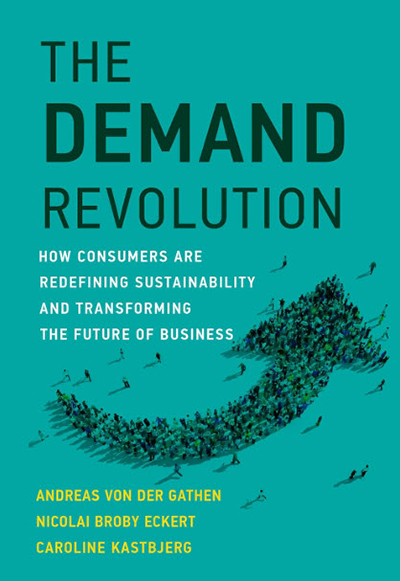
The Demand Revolution: How Consumers Are Redefining Sustainability and Transforming the Future of Business, by Andreas von der Gathen, Nicolai Broby Eckert, and Caroline Kastbjerg. Cambridge, Massachusetts: The MIT Press, 2024; 256 pages, $32.95.
“Sustainability—as We Know It—Is Not Sustainable” announces the title of Chapter 1 of The Demand Revolution. And with that, the book is off to the races with a trenchant indictment – not of the concept of sustainability or even of sustainability as a viable business strategy, but rather of what the authors consider the fatally flawed ways that far too many companies have tried, and failed, to make sustainable products and services profitable.
Further reading:
- Highly engineered Mississippi River became author’s obsession
- ‘Tell it like it is,’ activist Thunberg urges in offering on climate change
- Author stresses importance of smartly managing our most precious resource
To explain the oft-repeated conventional wisdom, which they insist is not wise at all, the authors – all highly placed colleagues at management consulting firm Simon-Kucher – introduce the concept that they call “the green mirage.” At its core, this is a concept centered on the fact that consumers say they care about sustainability but generally prove unwilling in large enough numbers to pay premium prices to offset the costs of sustainable products.
The problem with the green mirage, The Demand Revolution asserts, is that it rests on two related assumptions: that if customers are not willing to either pay more – or accept lower quality – in order to buy something sustainable, then they don’t actually care about sustainability.
Missing from that thinking? The idea that sustainable products can only work if consumers make sacrifices, rather than by companies setting out to make something innovative. And without that thinking – something that good companies implicitly pursue in other areas – sustainability initiatives become self-defeating propositions.
But it doesn’t have to be this way, the authors say. They argue that there is a perception gap wherein consumers are much more ready to opt for sustainable features than companies think they are. But even more crucially, they note that “The green mirage implies that the only practical commercial strategy for sustainability … is a skimming strategy with a premium-price position.”
They point out that there are other viable pricing strategies, such as penetration, that have proved wildly successful. In a telling example, they remind us that even in its earliest days, when it sold only books, Amazon eschewed a premium-price strategy, even though it was offering what was at the time a novel and wildly convenient option of ordering any book you wanted and having it shipped quickly to your door. And, in fact, they offered discounts as well.
Having explained the problem with current efforts, The Demand Revolution sets out to describe what companies can do to seize this as a strategic opportunity. The key is understanding that there is significant pent-up demand for sustainable solutions that are actually good and that many markets do not yet have a brand that is a recognized leader in sustainability. There are vacuums waiting to be filled, in other words – ones that can be filled using the power of consumer demand.
The book’s final three sections focus on a full fleshing out of the evidence for a sustainability-demand revolution “megatrend” that has been building for decades, the ways in which sustainability is already shaping consumer behavior (including a taxonomy of different consumer “types”), and finally how to think strategically about building successful strategies around sustainability. This takes us from necessary evolutions to avoid being overtaken by new technologies and new realities to six different options for business “plays” on sustainability: longevity, brand, mass affordability, antiwaste, ease of choice, and engagement.
Well written, highly researched, and backed by data from numerous surveys by the authors and their firm, The Demand Revolution does everything it can to help leaders and their companies think differently about sustainability as a potential high-risk, high-reward approach to business success.



